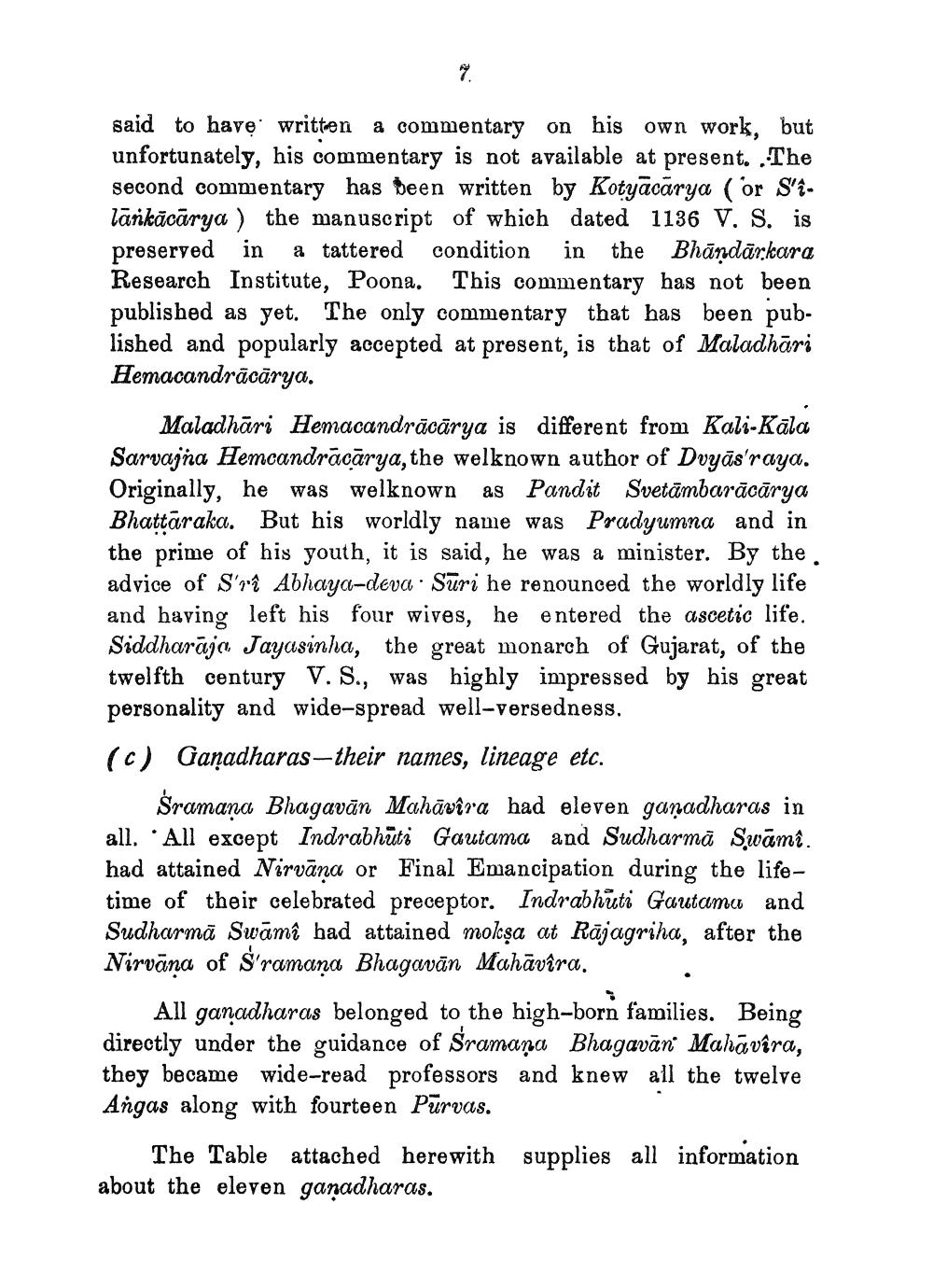________________
said to have written a commentary on his own work, but unfortunately, his commentary is not available at present. The second commentary has been written by Kotyācārya (or S'i. lankācārya ) the manuscript of which dated 1136 V. S. is preserved in a tattered condition in the Bhāņdārkara Research Institute, Poona. This commentary has not been published as yet. The only commentary that has been published and popularly accepted at present, is that of Maladhari Hemacandrācārya.
Maladhāri Hemacandrācārya is different from Kali-Kāla Sarvajna Hemcandrācārya, the welknown author of Dvyās'raya. Originally, he was welknown as Pandit Svetāmbarācārya Bhattaraka. But his worldly name was Pradyumna and in the prime of his youth, it is said, he was a minister. By the . advice of Sri Abhaya-deva · Suri he renounced the worldly life and having left his four wives, he entered the ascetic life. Siddharāja, Jayasinha, the great monarch of Gujarat, of the twelfth century V.S., was highly impressed by his great personality and wide-spread well-versedness. (c) Ganadharas-their names, lineage etc.
Šramaņa Bhagavān Mahāvīra had eleven ganadharas in all. .All except Indrabhūti Gautama and Sudharma Swami. had attained Nirvana or Final Emancipation during the lifetime of their celebrated preceptor. Indrabhuti Gautama and Sudharmā Swāmî had attained mokşa at Rājagriha, after the Nirvāṇa of Š'ramana Bhagavān Mahāvara.
All ganadharas belonged to the high-born families. Being directly under the guidance of Sramaņa Bhagavān* Mahāvara, they became wide-read professors and knew all the twelve Angas along with fourteen Purvas.
The Table attached herewith supplies all information about the eleven ganadharas.




